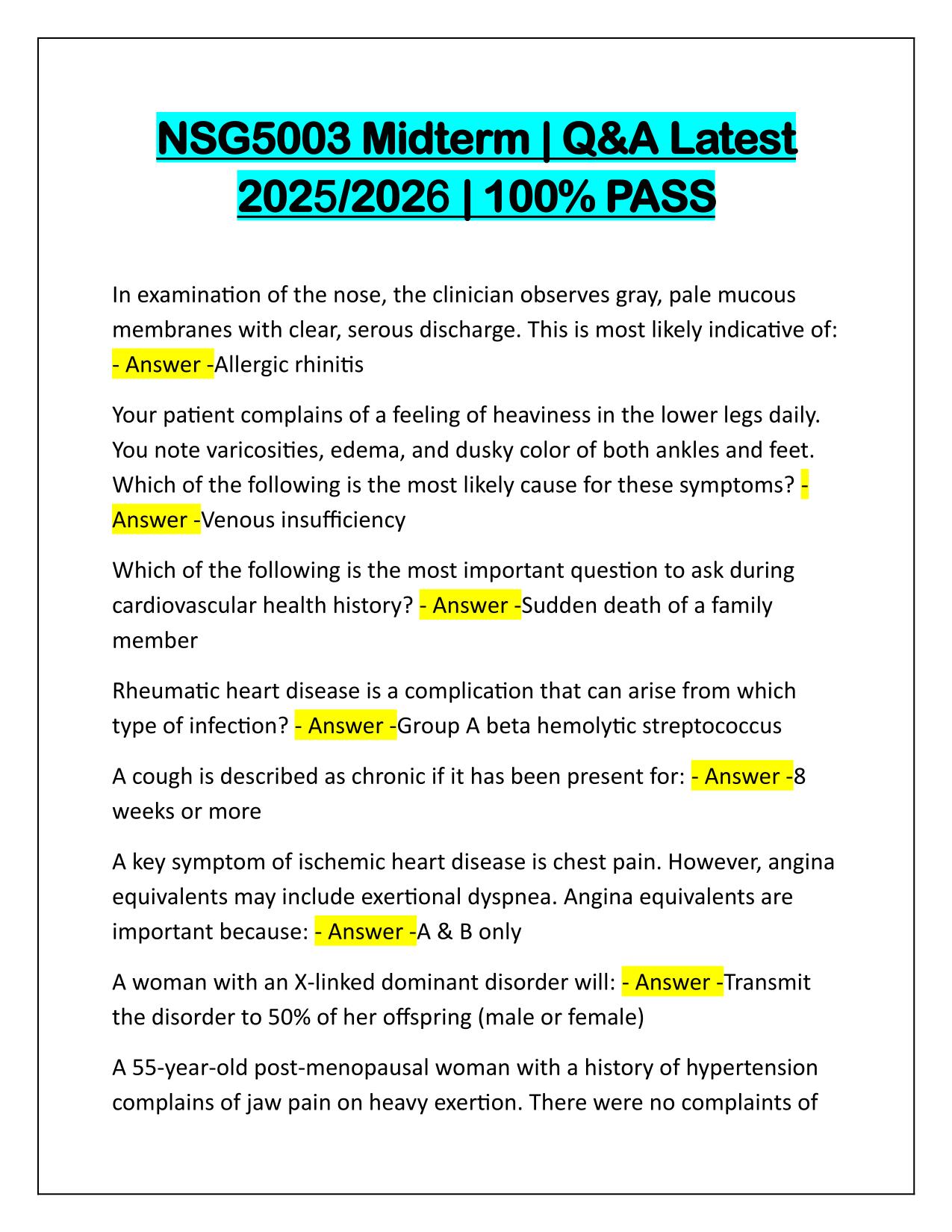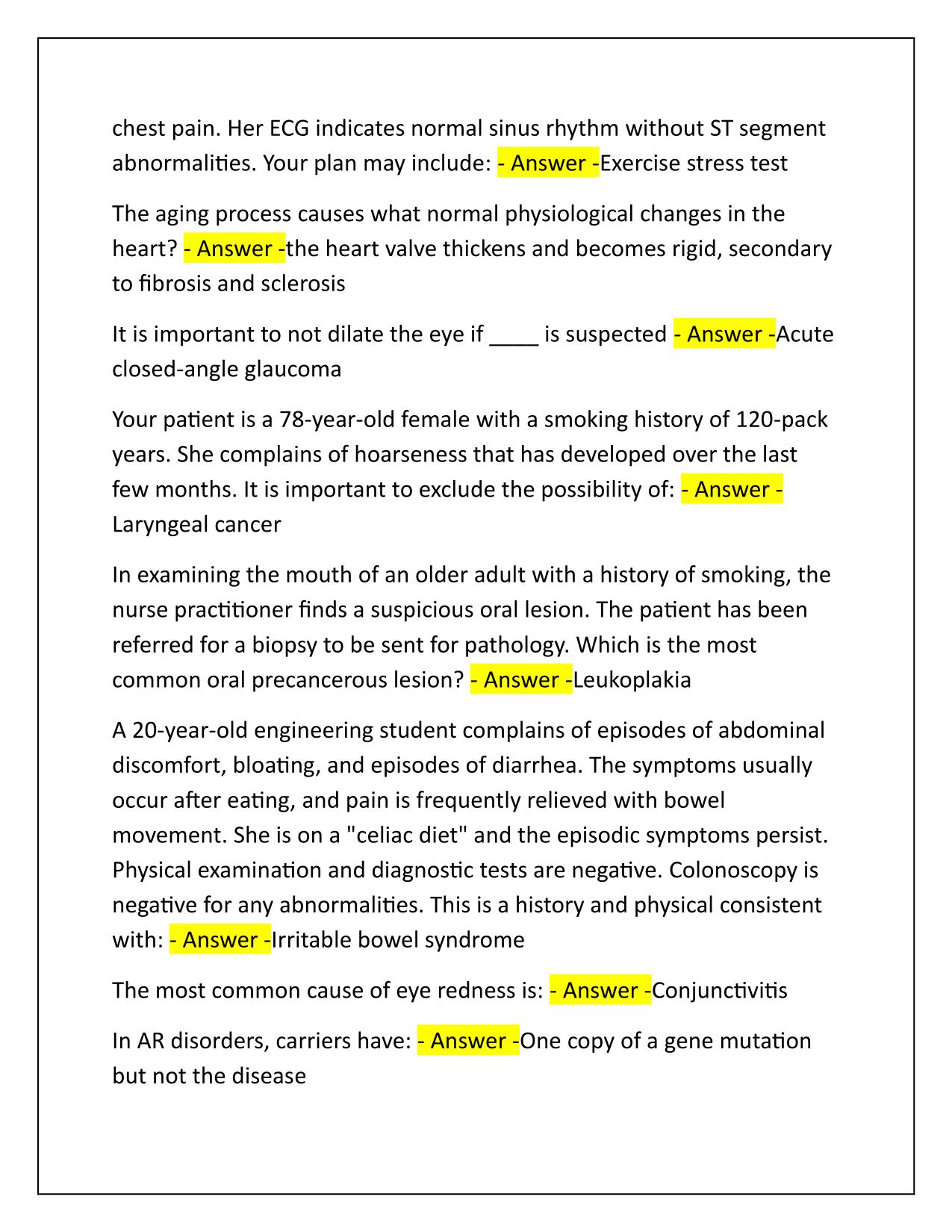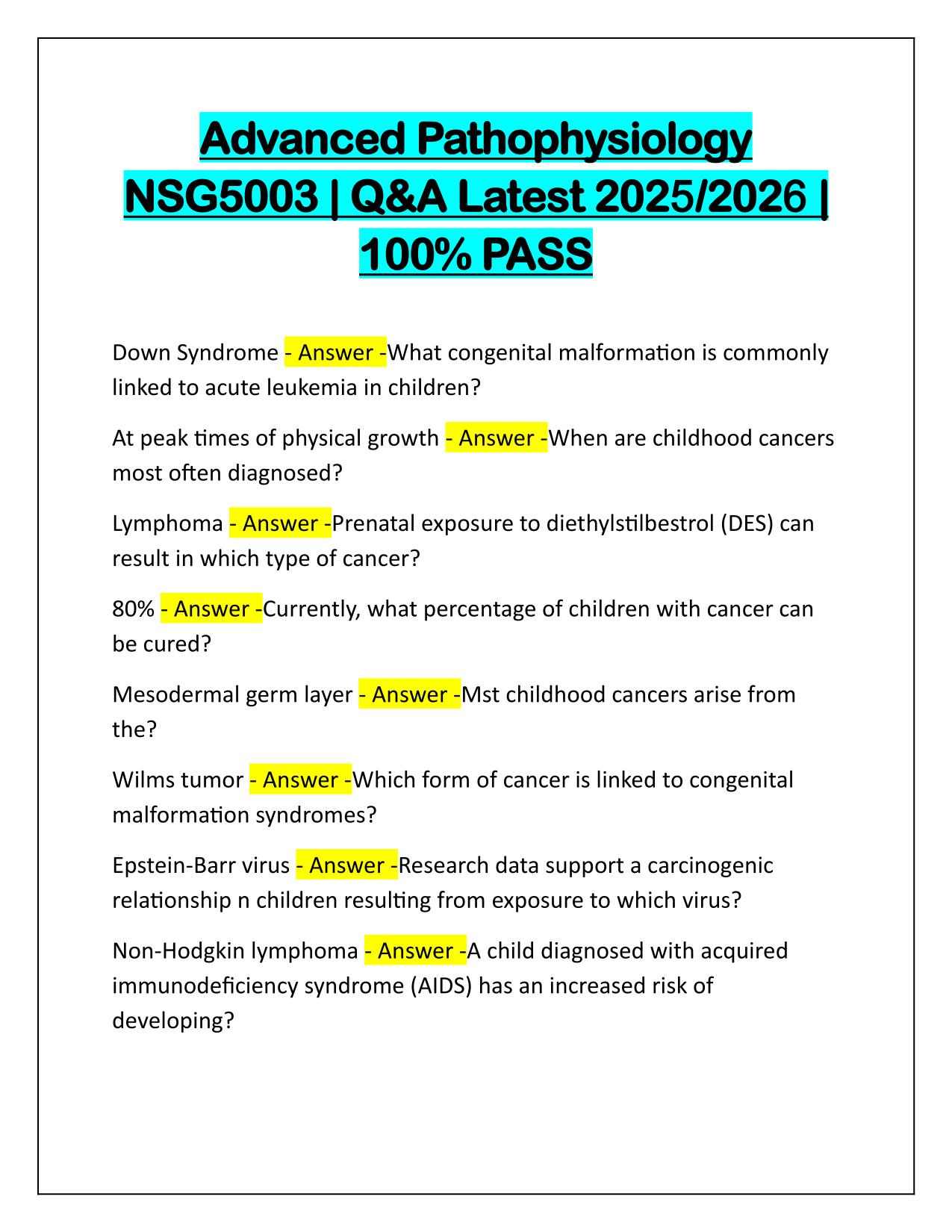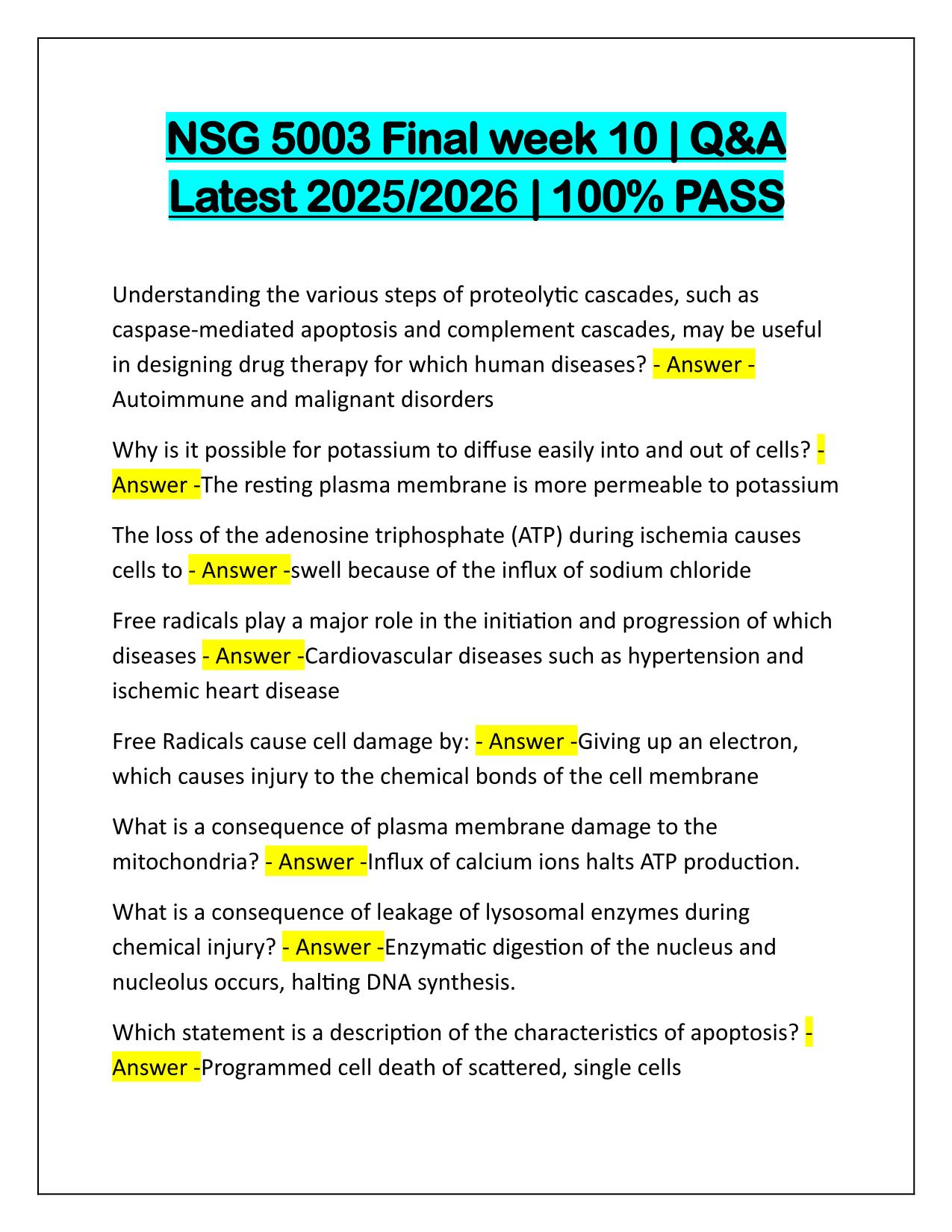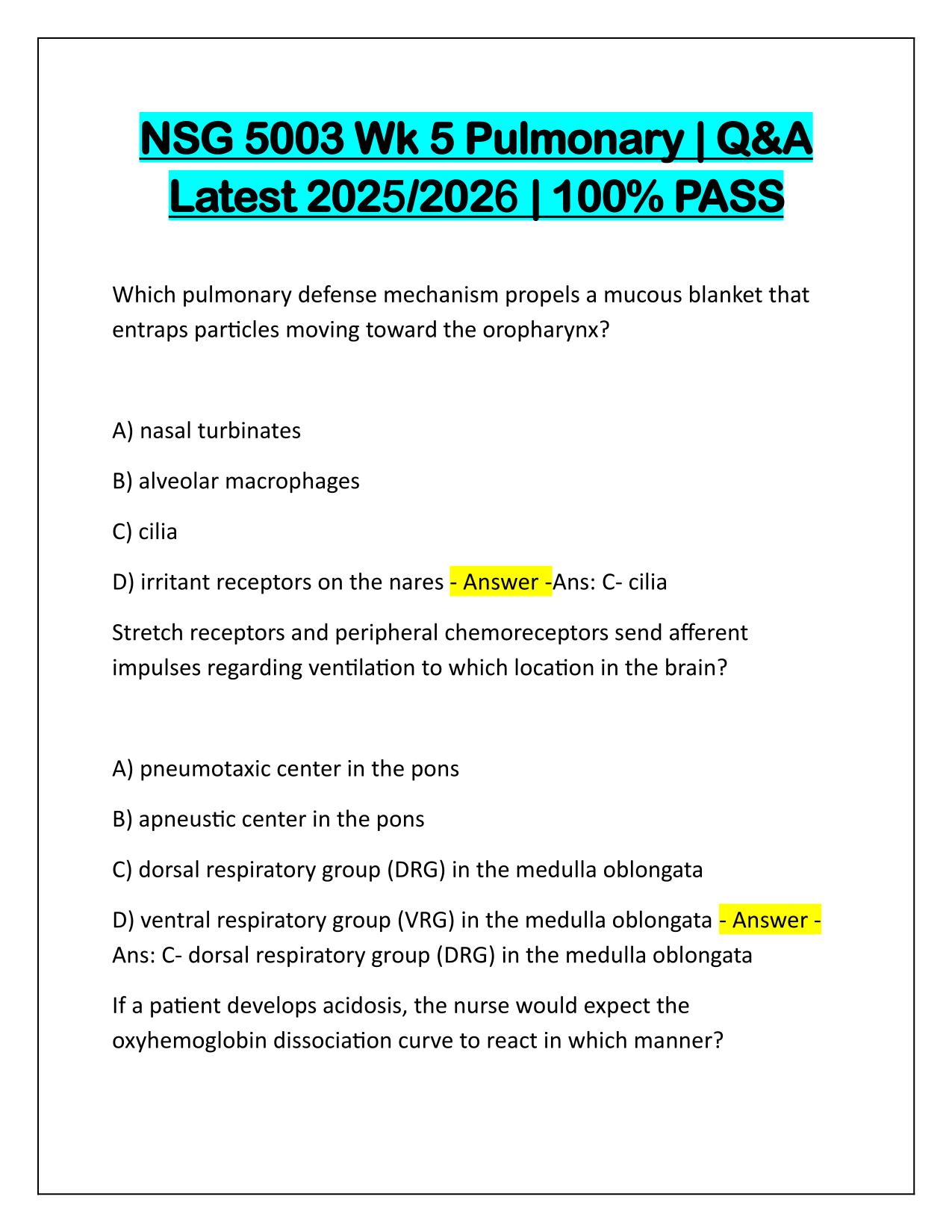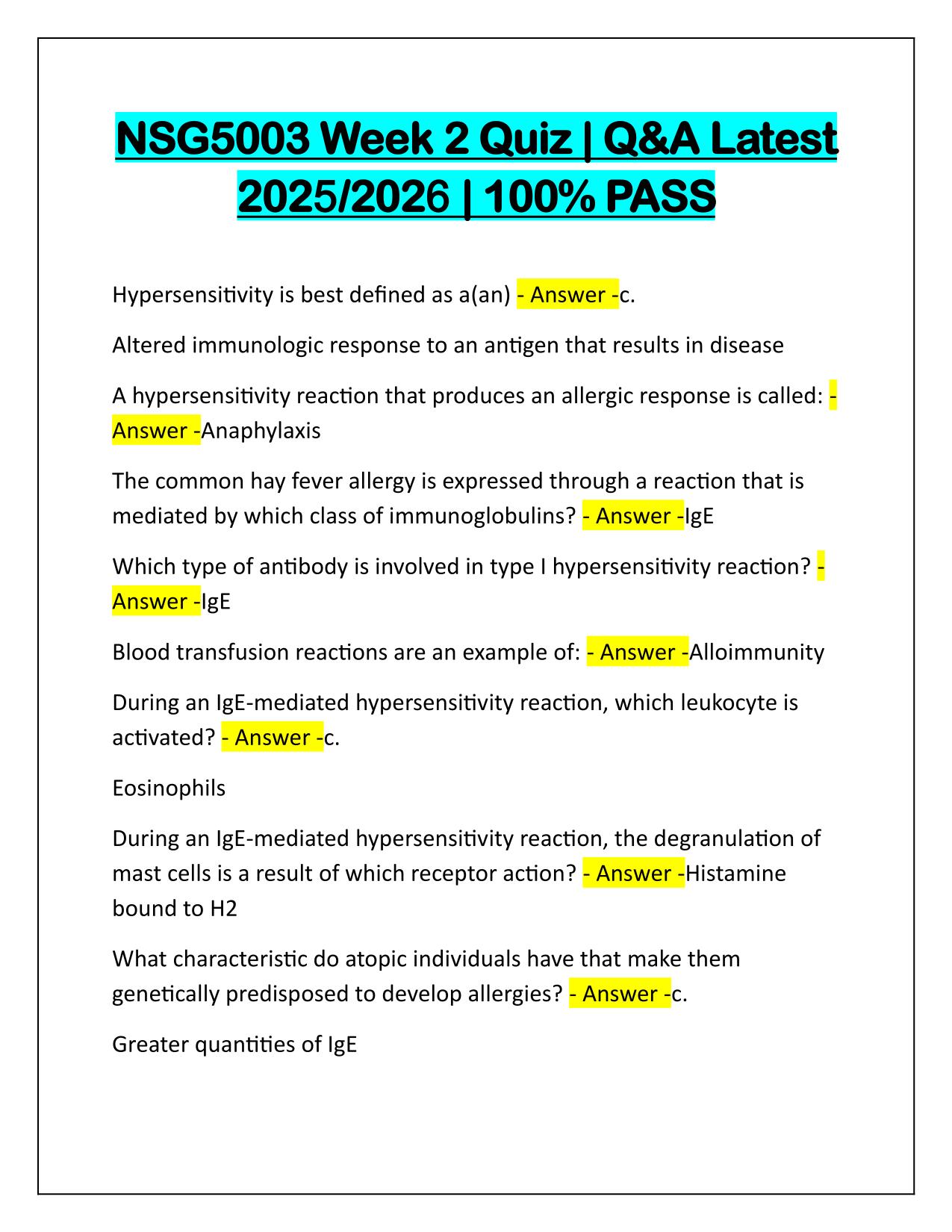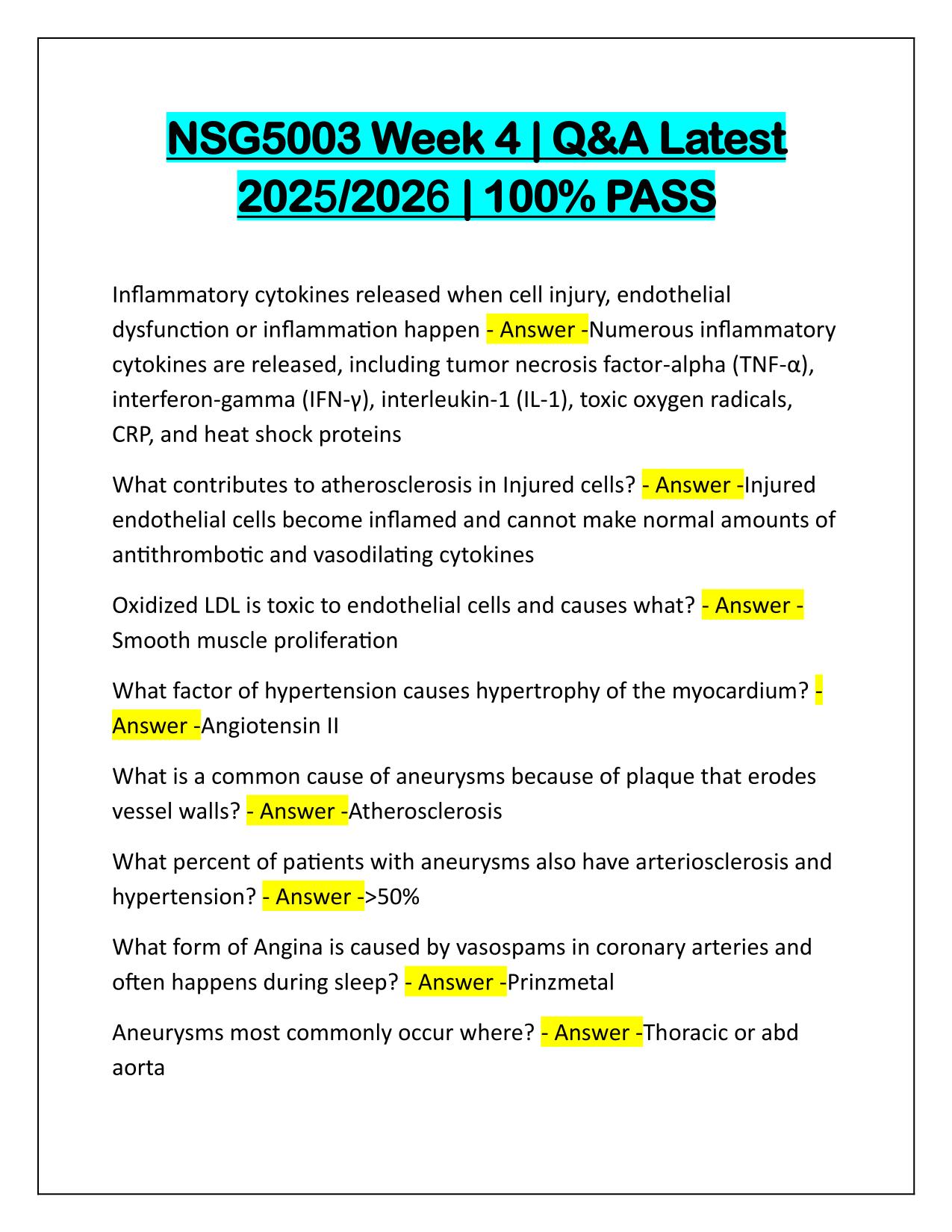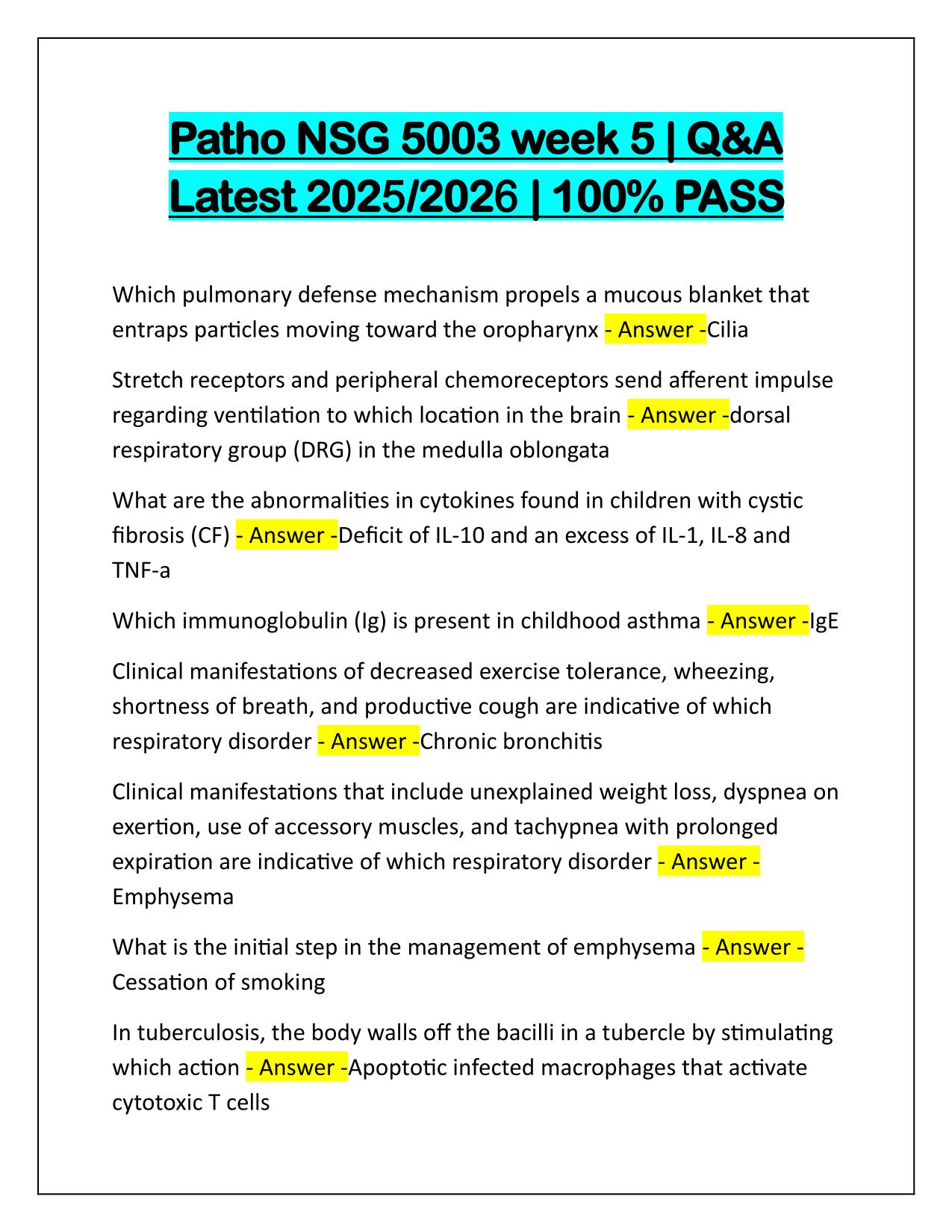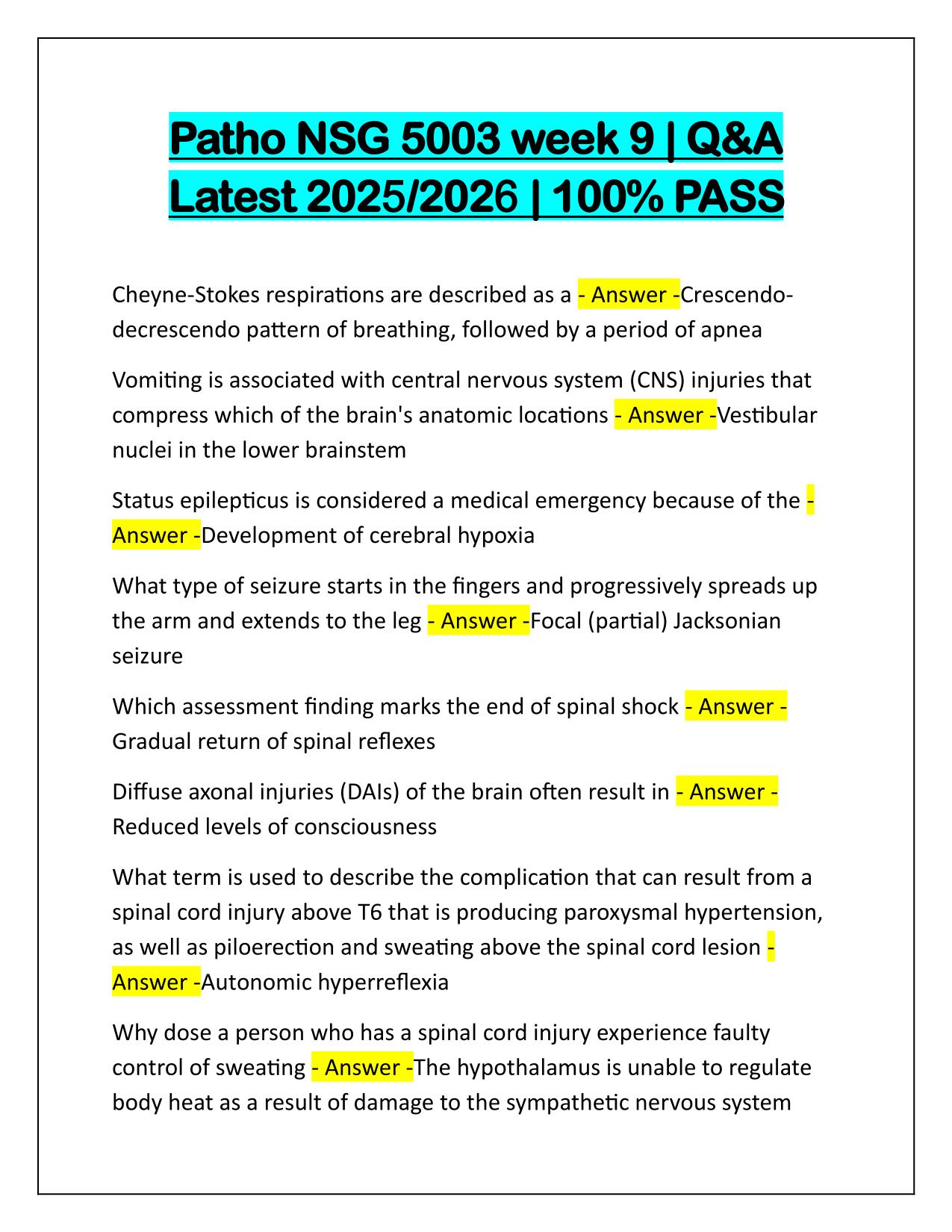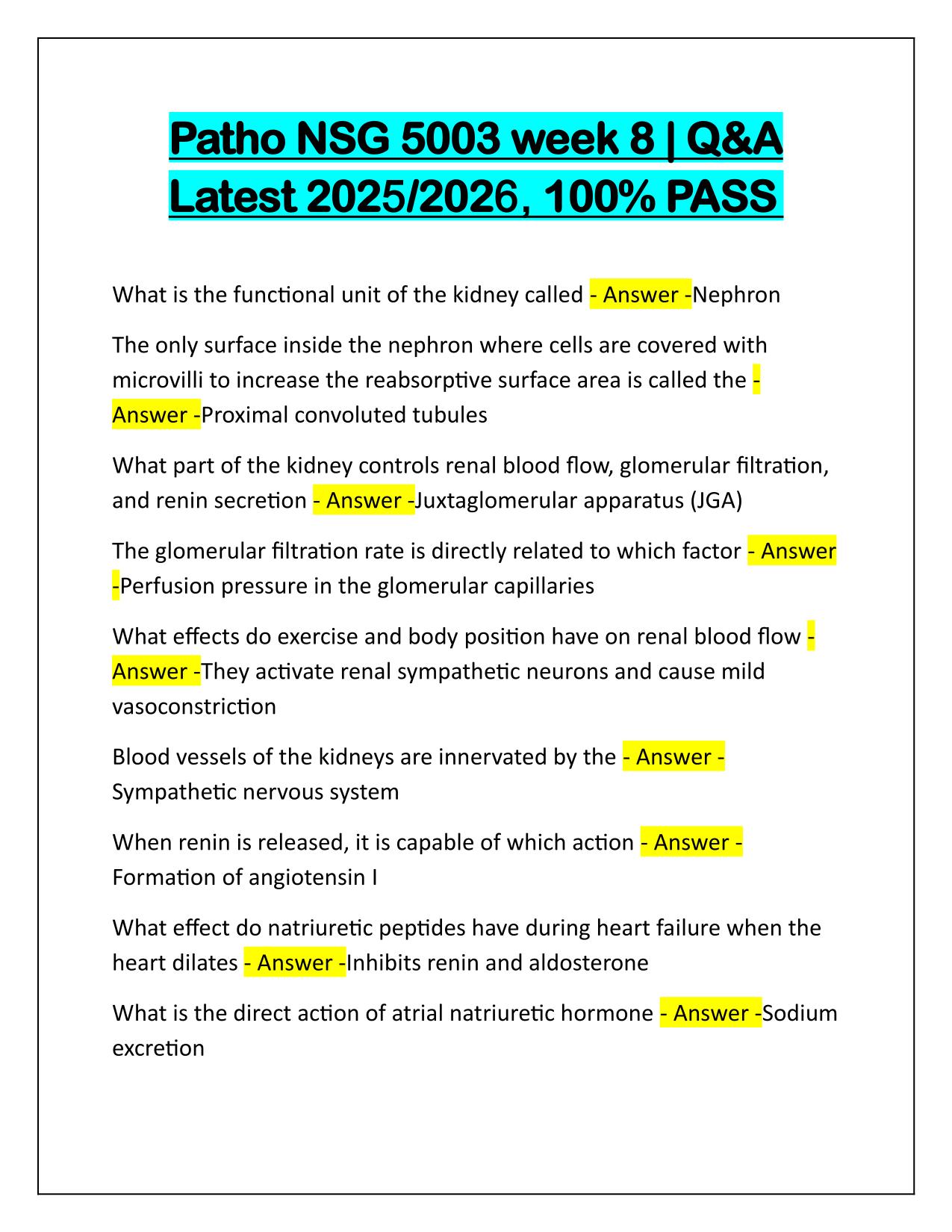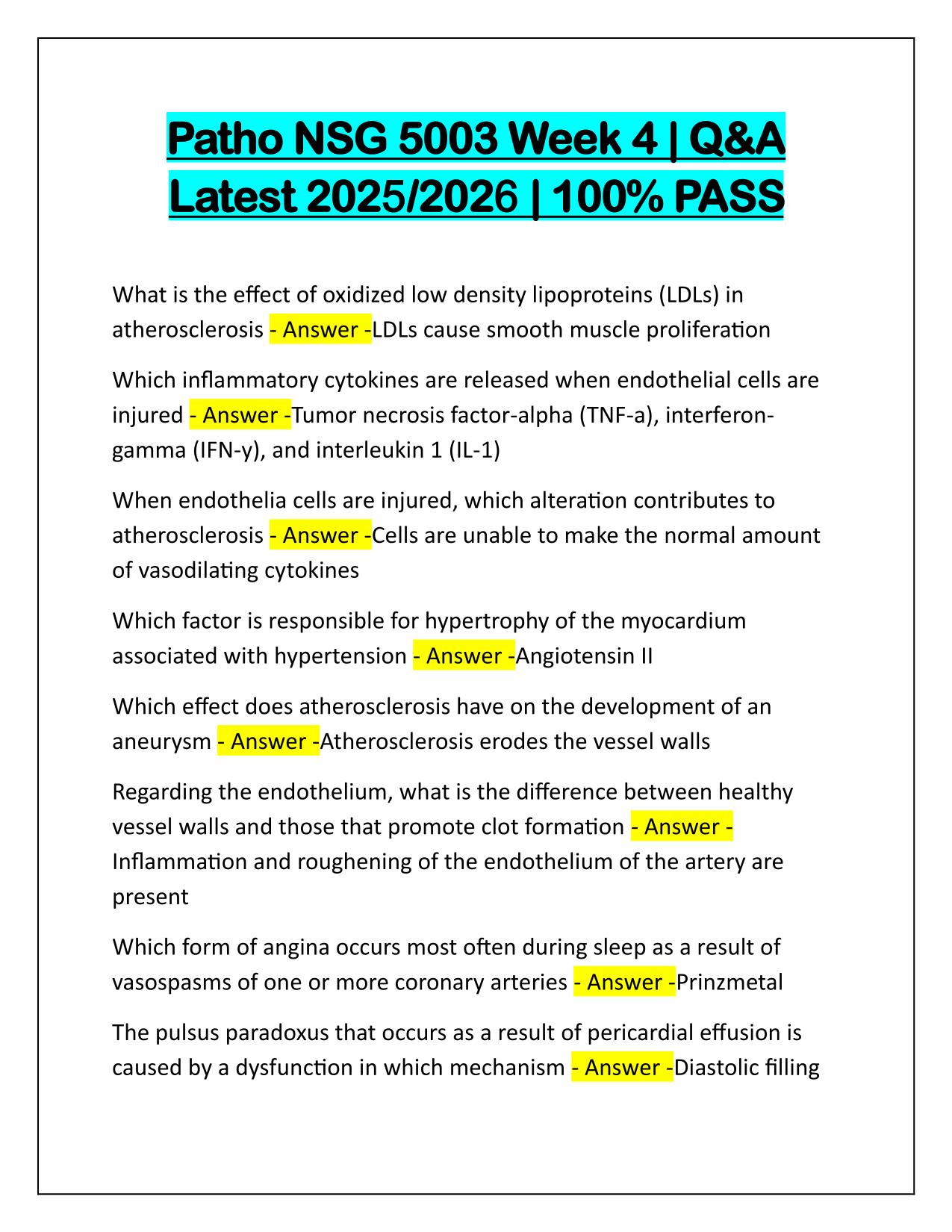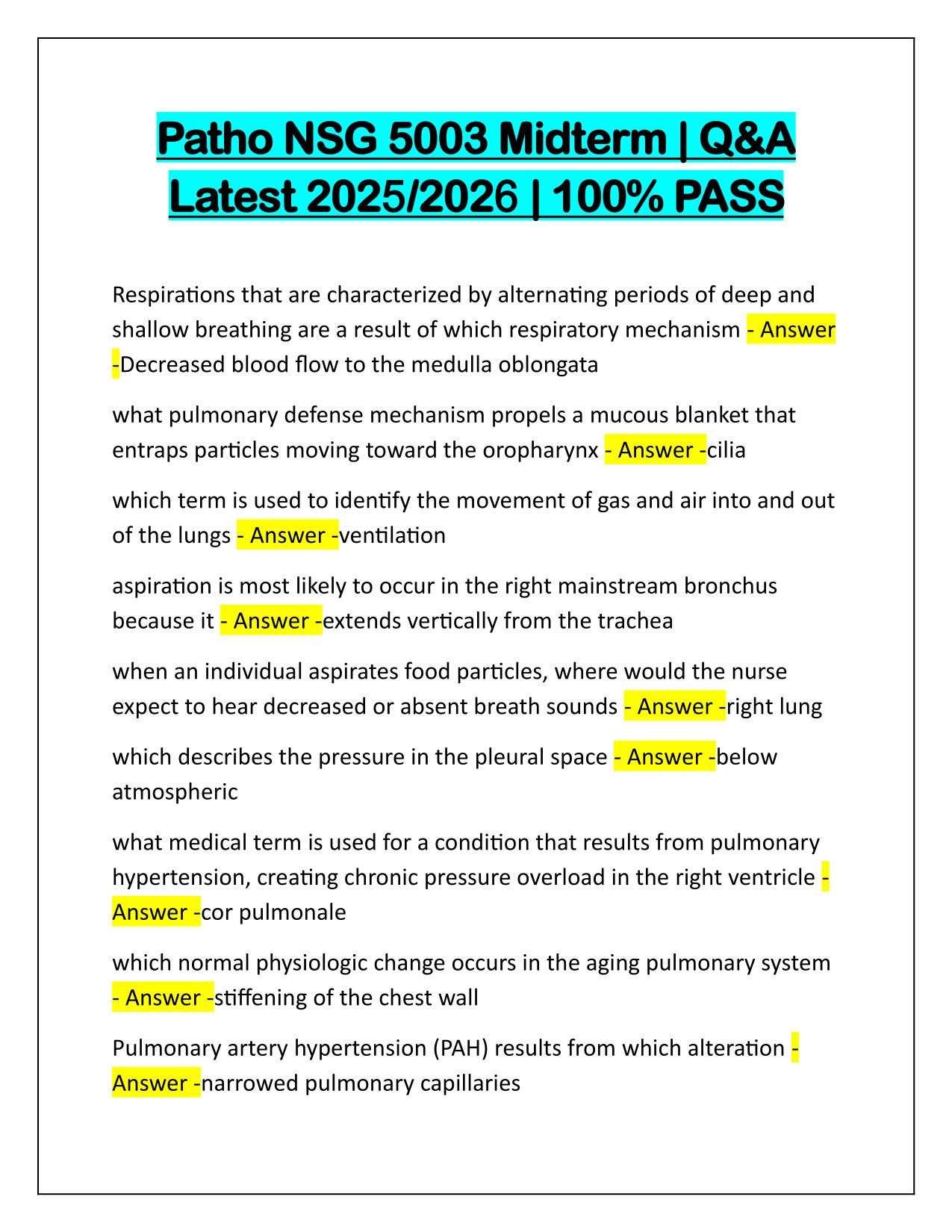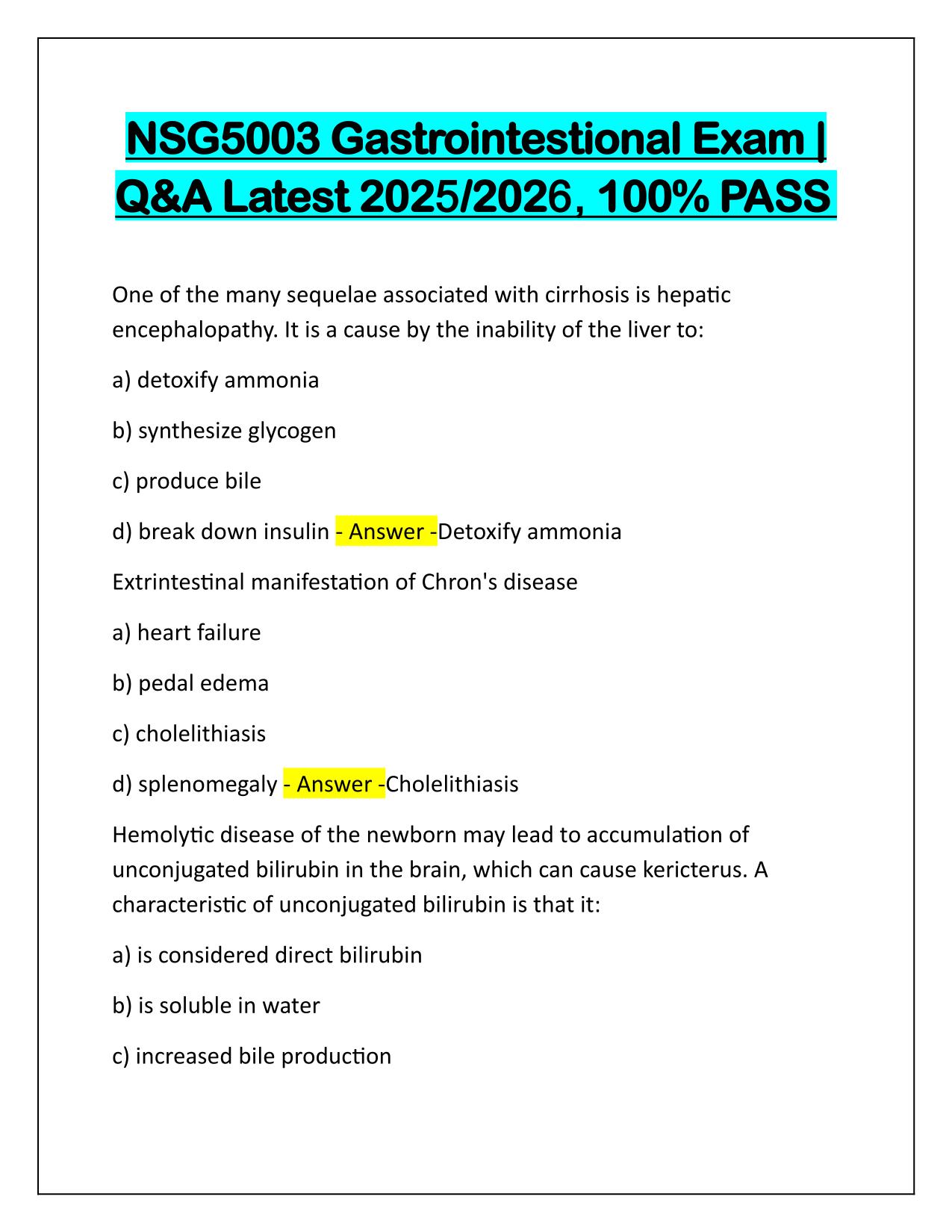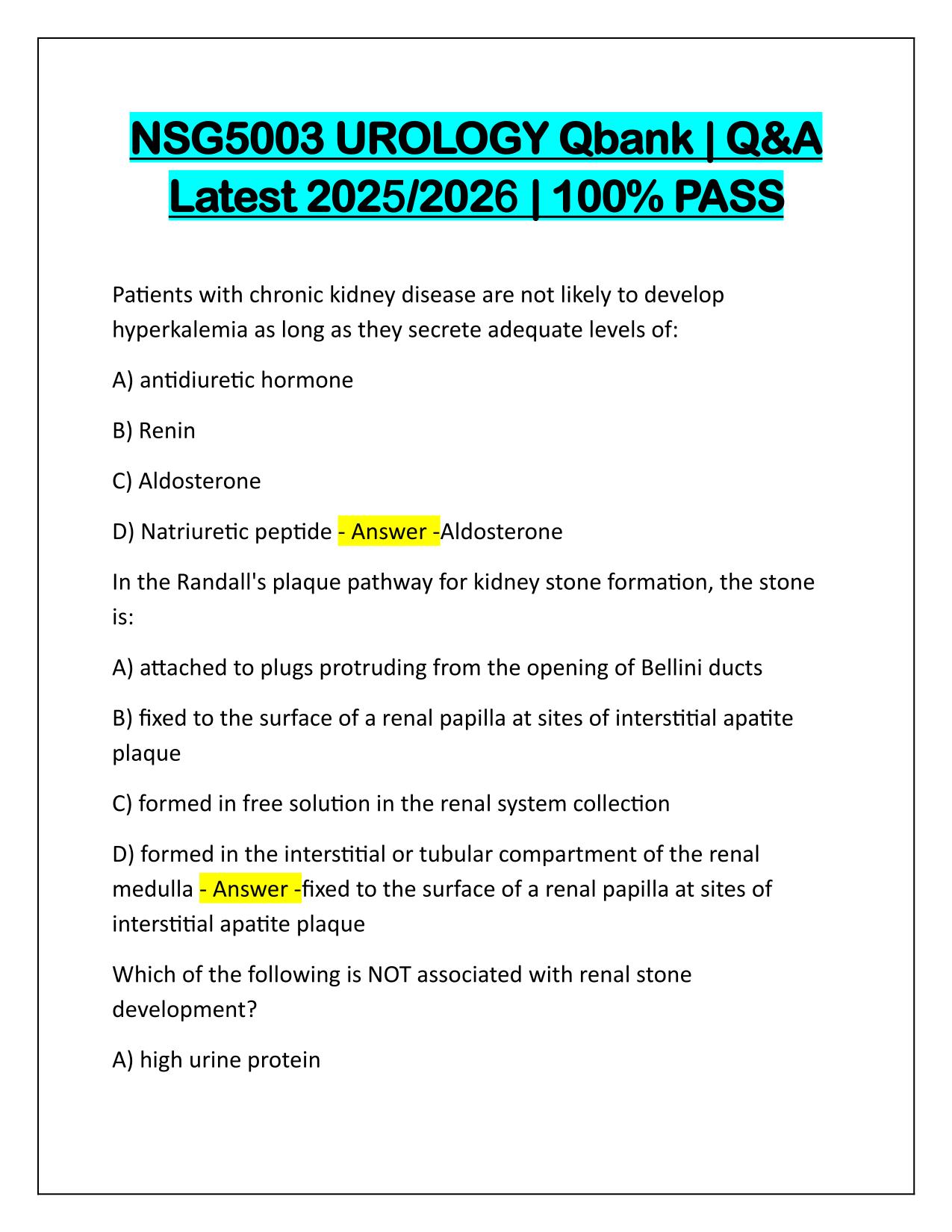NSG5003 Midterm Q&A Latest Update
Course:
NSG 5003
Institution:
NSG 5003
NSG5003 Midterm Q&A Latest Update
After purchase, you get:
✅ Instant PDF Download
✅ Verified answer explanations
✅ Refund if not Satisfied
✅ Prepared for 2025/2026 test cycle
Document Information
| Uploaded on: | May 4, 2025 |
| Last updated: | May 12, 2025 |
| Number of pages: | 10 |
| Written in: | 2025/2026 |
| Type: | Exam (elaborations) |
| Contains: | Questions & Answers |
| Tags: | NSG5003 Midterm Q&A Latest Update |
Seller Information

AdelineJean
User Reviews (0)
Exam (Elaborations)
$9.00
Bundle Deal! Get all 13 docs for just $23.99
Add to Cart
100% satisfaction guarantee
Refund Upon dissatisfaction
Immediately available after purchase
Available in Both online and PDF
$9.00
| 0 sold
Discover More resources
Available in a Bundle
Content Preview
NSG5003 Midterm | Q&A Latest 2025/2026 | 100% PASS In examination of the nose, the clinician observes gray, pale mucous membranes with clear, serous discharge. This is most likely indicative of: - Answer -Allergic rhinitis Your patient complains of a feeling of heaviness in the lower legs daily. You note varicosities, edema, and dusky color of both ankles and feet. Which of the following is the most likely cause for these symptoms? Answer -Venous insufficiency Which of the following is the most important question to ask during cardiovascular health history? - Answer -Sudden death of a family member Rheumatic heart disease is a complication that can arise from which type of infection? - Answer -Group A beta hemolytic streptococcus A cough is described as chronic if it has been present for: - Answer -8 weeks or more A key symptom of ischemic heart disease is chest pain. However, angina equivalents may include exertional dyspnea. Angina equivalents are important because: - Answer -A & B only A woman with an X-linked dominant disorder will: - Answer -Transmit the disorder to 50% of her offspring (male or female) A 55-year-old post-menopausal woman with a history of hypertension complains of jaw pain on heavy exertion. There were no complaints of
